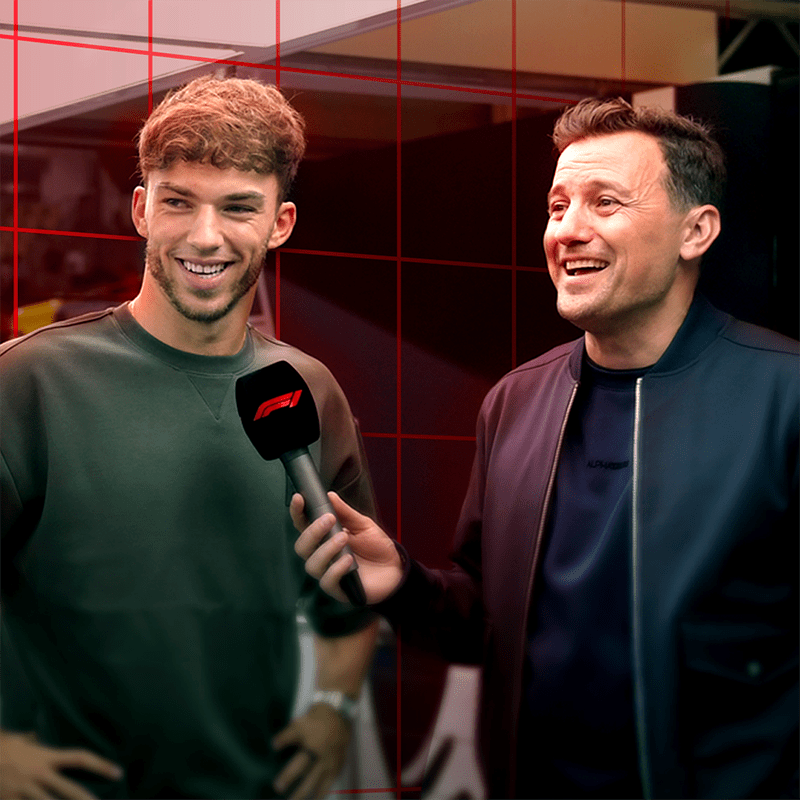Feature F1 Unlocked
THE STRATEGIST: Did the wrong strategy cost AlphaTauri P7 in their constructors' battle with Williams?

While both the drivers’ and constructors’ championships had been sewn up before Formula 1 arrived in Abu Dhabi for the season finale, there were still plenty of teams and drivers locked in battle for their final finishing positions – with every place in the constructors’ standings worth millions of dollars to each team.
One such battle existed between Williams and AlphaTauri, with the British team just seven points ahead in the fight for P7 before the final race of the year. Former Aston Martin strategist Bernie Collins looks at how this one played out, and whether a different strategy could have seen AlphaTauri overhaul their rivals under the Yas Marina lights...
READ MORE: How Mercedes’ P2 in the constructors’ was secured by 1.1s on the last lap of 2023
In such circumstances it's easy to lose focus a little from scoring the best points for yourself versus preventing your competitor scoring. Pre-race, the optimal strategy was expected to be close between a one-stop and two-stop. However with a low risk of a Safety Car and it being relatively easy to overtake at the Yas Marina Circuit, that has often pushed the teams towards multiple stop strategies.
High tyre degradation not only loses time towards the end of the stint but also creates a powerful undercut and further improves overtaking opportunities across cars on various strategies.

The favoured strategy across the field ended up being a two-stop using two sets of the hard tyre and a single set of mediums. All but three drivers started on the medium tyre; exceptions being Lance Stroll, Carlos Sainz and Valtteri Bottas.
And only three drivers completed a one stop strategy; Yuki Tsunoda, Esteban Ocon, and Bottas.
Post-race it was clear that because of the tyre degradation being higher than expected, the one-stop strategy was around 6.5 seconds slower in optimum race time than the preferred two-stop.
F1 NATION: Verstappen signs off in style and Mercedes grab P2 – it's our Abu Dhabi Grand Prix review
However at most events the one-stop would mean the driver would retain some track position and therefore it would potentially be worth an overall slower race time. This was not the case in Abu Dhabi.
In Abu Dhabi those extending the first stint through either a one-stop strategy or because they started on the hard start tyre, risked having a faster car ahead of pitting and emerging behind on track.
In the race trace (below) it can be seen that for the first pit stop most of the field stopped around Lap 15. Four drivers extended – Tsunoda and Stroll to Lap 22, Sainz to Lap 23 and Bottas to Lap 29.

All, with the exception of Tsunoda, lost time with drivers emerging behind and overtaking them on track. Tsunoda, as the lead car, had the most margin to drivers that completed pit stops, but Sainz and Bottas, as the two most rearwards cars, suffered the most.
Tsunoda completed his first pit stop a little earlier than optimum to avoid being overtaken by Max Verstappen. Sainz however lost four positions at the end of the first stint.
READ MORE: 5 Winners and 5 Losers from Abu Dhabi – Who rounded off the season on a high?
Bottas, on a one-stop strategy, lost 11 positions in the first stint. Each position loss brings with it a lap time loss. That time loss can vary based on the position of the overtake or how hard a driver defends – but there is always a deficit. From Sainz’s lap times (the chart below) it can be seen that for the overtakes from Lap 15 onwards he loses at least 0.5 seconds for each one.
The same effect is seen for any drivers trying to stretch the final stint while holding on to position. As a result of the one-stop strategy, Tsunoda lost six positions in this phase.

Tsunoda finished the race just 3.5 seconds behind Fernando Alonso – so had the Japanese racer completed a two-strop strategy instead of a one-stop, the time he would have saved might have gained him a position and two valuable points for AlphaTauri, who only finished three points behind Williams when it was all over.
But what about Ricciardo?
Daniel Riccardo was of course the other potential points scorer for AlphaTauri, however a visor tear off blocking his brake duct forced an earlier than planned first pit stop and thus forced him onto a two-stop strategy. More importantly for Riccardo this resulted in him emerging on track behind both Williams drivers who were both on a more optimum two-stop strategy.
With no possibility of scoring points themselves Williams used Sargeant to set about hurting Riccardo’s chances of doing so. As Riccardo started his final hard tyre stint, Sargeant – ahead on 16-lap older hards – held position for five laps, losing Riccardo a crucial seven seconds of race time.
Given that Riccardo finished the race just 0.5 seconds from the back of Stroll in the final points scoring position of P10, its easy to see how AlphaTauri could have ended the race equal on points with Williams.

Sargeant reveals Williams plan to hold up Ricciardo in Abu Dhabi
If Tsunoda had been able to achieve P7 with a different strategy and Riccardo had netted P10, then AlphaTauri would have equalled Williams’ points total. The championship position is then decided on highest finishing positions.
Both AlphaTauri and Williams have a best finish of seventh – with two P7s each across the year – so it would have moved to P8, which Williams would have won having two P8 finishes to AlphaTauri’s one.
So even though it ended up being super-tight, either Tsunoda or Ricciardo would have needed to finish at least one place higher than the scenario above to leapfrog Williams into that P7 slot.























.jpg.transform/9col/image.jpg)